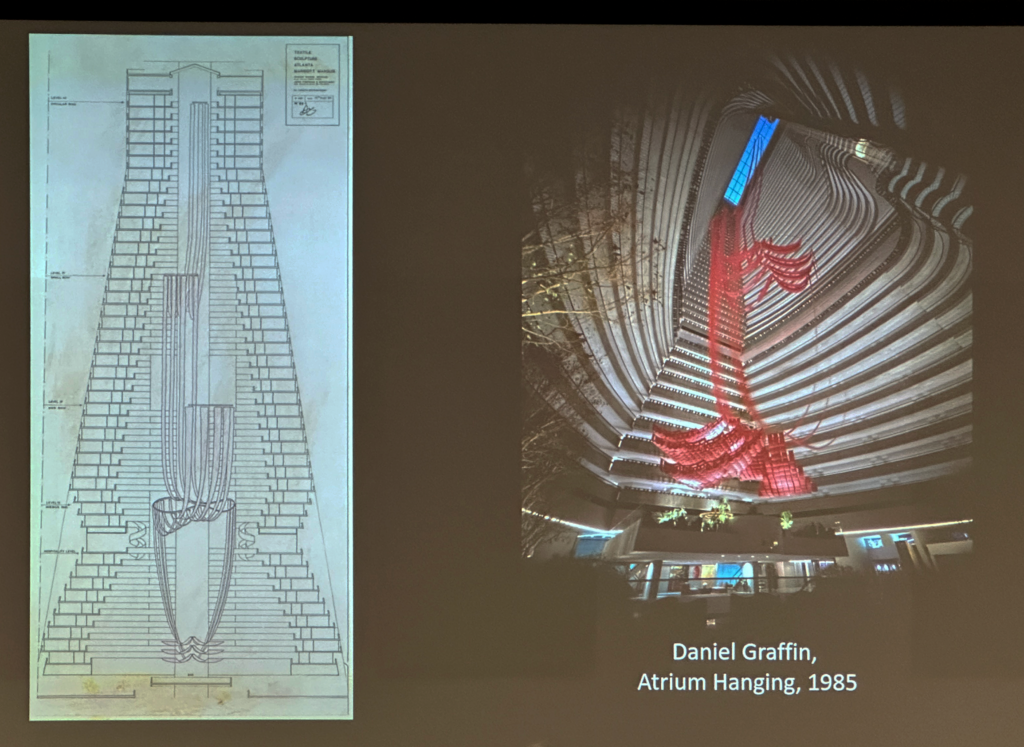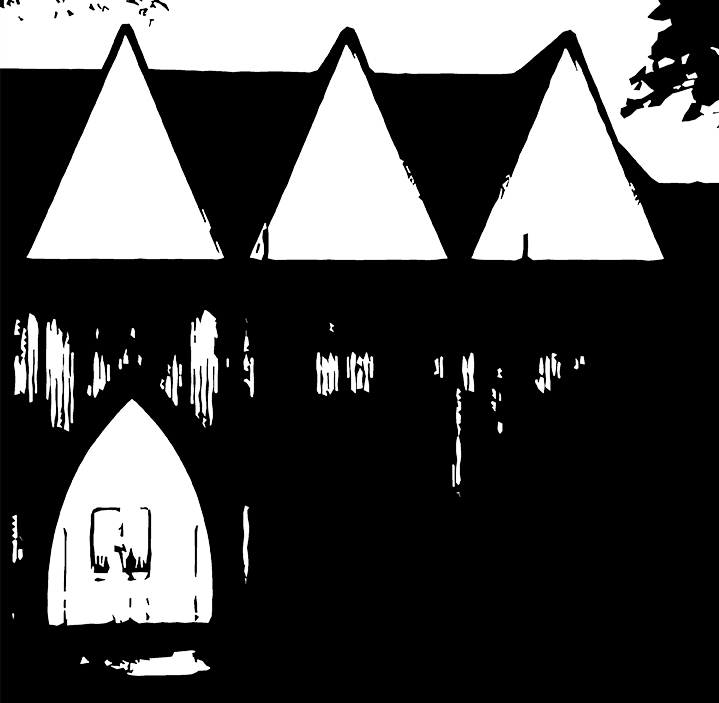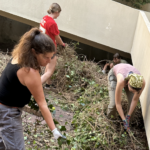Thursday evening Susan Richmond Professor of Art History at Georgia State University presented Fiber Art in Atlanta’s Built Environment, the lecture complements an Octover weaving workshop as part of The Sarah Hamilton Leathers ’53 and Leone Bowers Hamilton ‘26 Art Lecture Series. Richmond shared Lost Weavings: Mapping Works, Remnants and Removals (https://www.lostweavings.com), a collaboration between Richmond and her colleague Jess Jones, professor in the department of Textiles at Georgia State. In October Jones hosted a weaving workshop as part of our year of learning from John Portman, demonstrating similarities between tabby (or plain) weave traditions and Portman’s brick patterns.
Lost Weavings is an ongoing project that unearths an impressive number of large scale textile works commissioned by Atlanta architects to complement their buildings. A striking example is a work by french artist Daniel Graffin installed in the atrium of Portman’s Marriott marquis in 1985.

Graffin plays with his the attributes of cloth–soft, light, flexible– to counter the solid structure of Portman’s concrete. While the two works share a sense of monumental scale, a contrast of material, color, and position create a dynamic harmony that complements both works. The bold red pulls our eyes across the atrium as it functions to at once suggest capacity and presence. The soft red lines form rhythmic repetitious lines and shapes within Graffin’s work, framing architectural textures in subtle secondary planes that playfully shift in focus from confident loose lines to geometric solids and back again. The two structures are in a fluid dialogue of light and space. Moving lines of red swoop into intersections of solid ordered repetition of horizontality in Portman’s repeating floors of planters, floors and hallways. The fabric has a freedom that the architect’s material lacks. It can swing in casual diagonals and falling loops–its lightness allows a sense of casual, playful and poetic step and repeat patterns. While the textile is free from the burden to provide structure, the serious architecture anchors it. The two works have an interdependency that brings out the best in each, both emphasizing the sense of space that exists in the atrium far above our heads.
As in an engaged discussion, the weaving complicates the atrium space, elegantly presenting its complications.
While much of the work is lost, Richmond and Jones are tracking the stories, cites, placements and authors of these magnificent pieces to bring them back to mind. The website they are building to document and record is an ongoing project where they are digitally mapping their findings. It is a generous project.
We are grateful to Jim Leathers whose funding of The Sarah Hamilton Leathers ’53 and Leone Bowers Hamilton ‘26 Art Lecture Series affords us the opportunity to engage with projects like this one that act as inspiration for our students as they connect us to our history and community and to important art skills and formats.
Share via:


